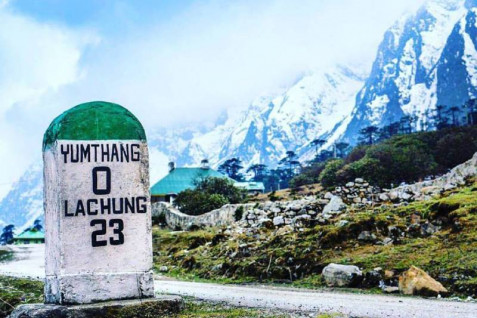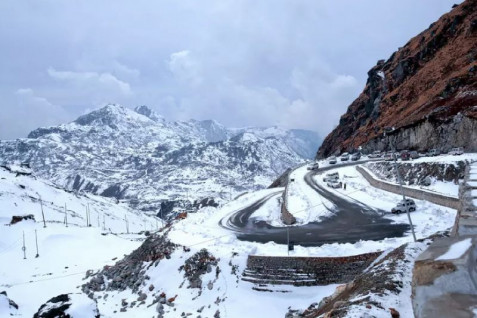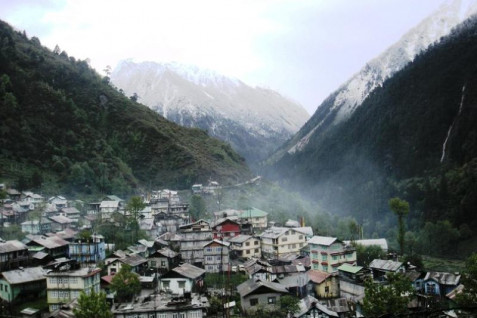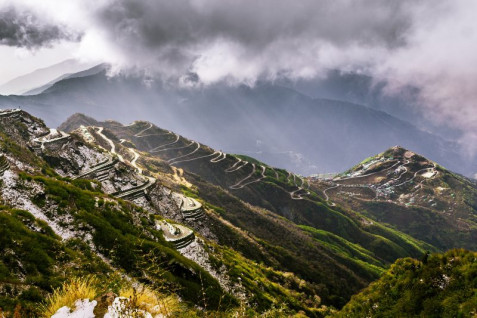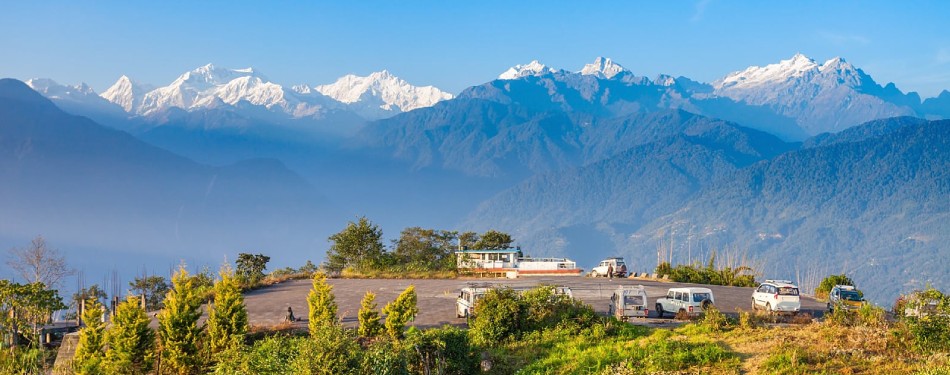
- On 14-Dec-2019
- By Sangay Palmu Bhutia
Top 5 places to visit in Pelling, West Sikkim
Located at the foothills of Mt.Kanchenjunga is the beautiful small hill town Pelling. It is situated in West district of Sikkim with an elevation of 7,200 feet above the sea level. It is at a distance of 131 km from the capital(Gangtok) and 10 km away from the west district headquarters(Geyzing).
Pelling is emerging as the second biggest tourist destination of Sikkim. Pelling gives the best breathtaking tourist sites of west Sikkim apart from the scenic beauty it also has sites for mountain biking, rock climbing, village tours, meditations and base camp for number of treks in the region.
The town has serene environment and pulls most of the tourists due to its rich heritage and culture. It offers an astounding view of Mt.Kanchenjunga up so close that you can see the snow capped mountains change color from pink to gold to white ending with an inexpressible shade of orange. Pelling is the perfect destination for all nature lovers and adventure enthusiasts. Here are the top 5 places that you can visit in Pelling:
Pemayangtse Monastery
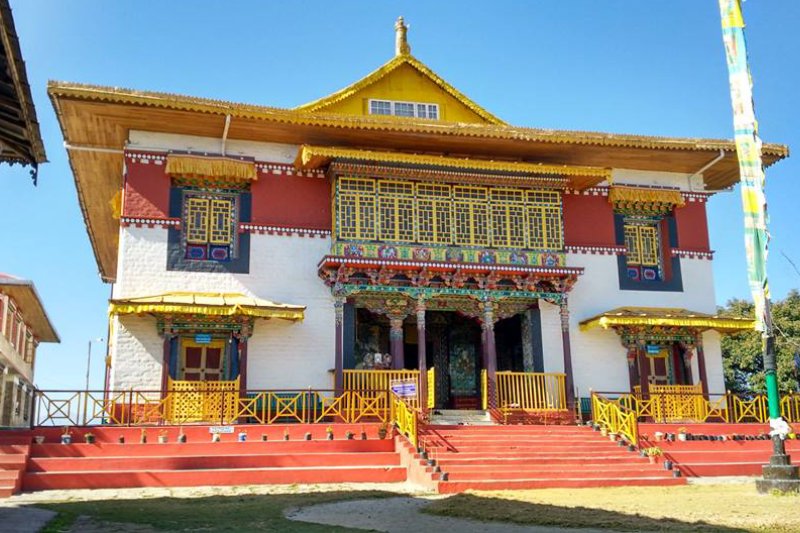 A renowned Buddhist monastery from the history of Sikkim is the Pemayangtse monastery. Dated back to 1705, the monastery was planned, designed and founded by Lama Lhatsun Chempo. The word Pemayangtse means "Perfect sublime Lotus" and it is one of the most visited tourist destinations in Pelling. Originally built only as a small Lhakhang, it was later on enlarged by the third chogyal of Sikkim and Jigme Pawo (third reincarnation of Lhatsun Chempo).
A renowned Buddhist monastery from the history of Sikkim is the Pemayangtse monastery. Dated back to 1705, the monastery was planned, designed and founded by Lama Lhatsun Chempo. The word Pemayangtse means "Perfect sublime Lotus" and it is one of the most visited tourist destinations in Pelling. Originally built only as a small Lhakhang, it was later on enlarged by the third chogyal of Sikkim and Jigme Pawo (third reincarnation of Lhatsun Chempo).
The monastery is a three storied structure, the first floor has a notable collection of ancient Buddhist antique idols, scriptures as well as sculptures and decorated paintings, the eight incarnations in fierce form of Padmasambhava's can also be seen here. On the top floor of the monastery we can see a seven-tired painted wooden structure, portraying Guru Rimpoche's "Sangthokpalri" meaning the Heavenly Palace.
The architecture of the monastery is very rich and cultural themed, the main prayer hall or also called the Lakhang has colourfully painted doors with statues of saints and Rinpoches, the walls are covered with paintings representing the rich cultural and spiritual roots and beliefs of the people.
The monastery not only holds the history of 300 years but also provides the sight of snow capped mountains on both sides of the monastery, the compound has well managed gardens, you can also get a glimpse of Rabdentse ruins from here. The monastery has a soothing aura and the visit here will be uplifting.
Rabdentse Ruins
 Rabdentse served as the second capital of Sikkim, it was established in 1670 by Chadok Namgyal. Rabdentse ruins has been declared as the archeological site by the Indian government as it holds the glorious history of the former Kingdom of Sikkim.
Rabdentse served as the second capital of Sikkim, it was established in 1670 by Chadok Namgyal. Rabdentse ruins has been declared as the archeological site by the Indian government as it holds the glorious history of the former Kingdom of Sikkim.
In the 18th century the Gurkhas invaded the capital destroying the palace and the chortens turning it all into ruins. As you enter the gate it is covered with chestnut trees and as you follow the paved pathway you will reach the area where the palace used to exist. At the entry point of the palace you will be able to see Taphap Chorten and as you go further you can witness the stone throne consisting of three standing stones also called the Namphogang, it is the very place where the judges used to announce the final judgement.
The palace ruins has been divided into two wings, the northern and the southern wing. The southern wing has the stone throne and it is said to be the area where the King met with the common people. The northern wing was the residential area of the Royal family. This wing had the Dab Lhagang, it was the place where the Royal family used to offer prayers to their deities. Alongside we can see a white marble slab which is said to be the place where the monastery "Risum Gompa" once existed.
This place serves not only the history but also serves the best view of the nature, one side covered with Kanchenjunga hill ranges and the other side by green valleys and mountains, the visit here will leave an evergreen mark in your trip.
Skywalk Pelling
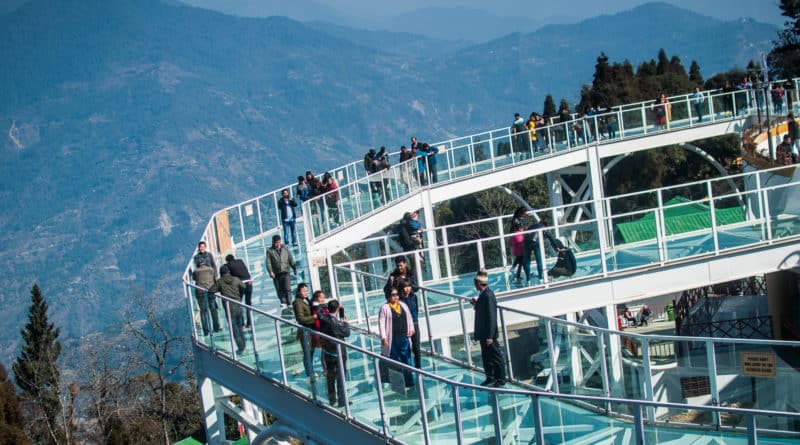 The visit to Pelling would not be complete if you don’t dare to visit Skywalk and walk on those glass floor. The height of the Skywalk being tall makes the walk more exhilarating. If you try to look down through those transparent glass it will surely pump up your excitement levels. From this point you can see the 137 feet statue of Chenrezig and the long elevated stairs with prayer wheels on both sides, the adjacent mountains and valleys. The Skywalk is also the perfect spot to take a good picture.
The visit to Pelling would not be complete if you don’t dare to visit Skywalk and walk on those glass floor. The height of the Skywalk being tall makes the walk more exhilarating. If you try to look down through those transparent glass it will surely pump up your excitement levels. From this point you can see the 137 feet statue of Chenrezig and the long elevated stairs with prayer wheels on both sides, the adjacent mountains and valleys. The Skywalk is also the perfect spot to take a good picture.
Khecheopalri Lake
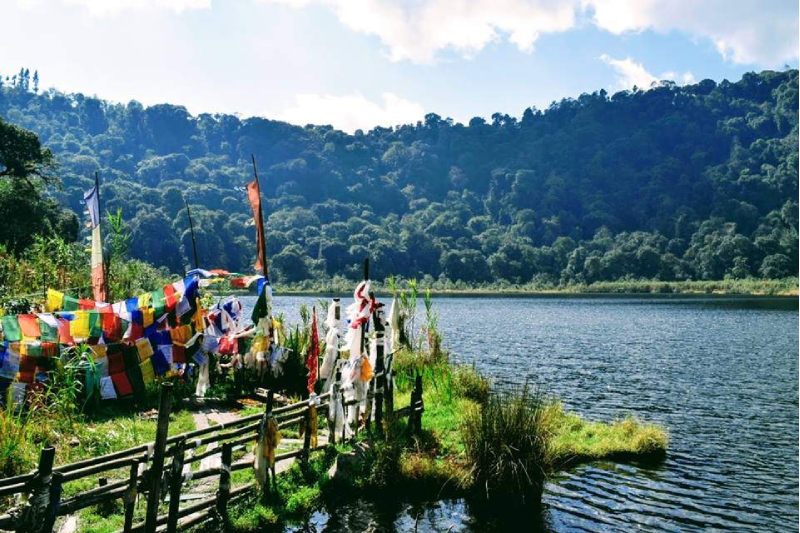 The Lake is situated at a distance of 34 km away from Pelling. The lake is sacred for both Buddhists and Hindus, it was originally known as Kha-chot-Palri and it is believed to be a wish fulfilling lake. The lake is a very important part of Buddhist religious pilgrimage circuit and is conserved from the biodiversity perspective with ecotourism. The legend says that you will see no leaves afloat on the lake despite the fact that there are lots of trees around, whenever a leaf falls the birds come and picks it up.
The Lake is situated at a distance of 34 km away from Pelling. The lake is sacred for both Buddhists and Hindus, it was originally known as Kha-chot-Palri and it is believed to be a wish fulfilling lake. The lake is a very important part of Buddhist religious pilgrimage circuit and is conserved from the biodiversity perspective with ecotourism. The legend says that you will see no leaves afloat on the lake despite the fact that there are lots of trees around, whenever a leaf falls the birds come and picks it up.
The name Khecheopalri means "flying yoginis palace". Guru Padmasambahava preached 64 yoginis here and the lake is believed to be the footprint of Goddess Tara Jetsun Dolma, on the stone near the chorten of the lake can be found the footprint of Macha Zemu Rimpoche.
The Hindu God "Shiva" meditated in Dupukney cave which is above the lake hence it is worshipped by the hindus. There is a boardwalk leading to the lake and from there we can offer prayers and incense, there are prayer wheels all along the boardwalk on either sides also with prayer flags and Tibetan inscriptions.
The water of the sacred lake is only allowed to be used for rites and rituals so every year in mid March and April there is a huge puja done here, it is this time of the year where people from all over the place and also the surrounding countries (Nepal, Bhutan) comes and offer their prayers and takes the water of the holy lake as prasad. During this puja time people offer butter lamps in bamboo boats tied with Khadas while chanting prayers. You can see stupas near the lake and a floating trident at the lake with sacred clothes tied to it. The atmosphere here is so enchanting and holy that you will feel enlightened by your visit here.
Kanchenjunga Falls
It is situated at a distance of 24 km away from Pelling, almost an hour drive. This perpetual waterfall has been a major tourist attraction in the region. The immaculate waterfall is believed to be originated from the glaciers of Mt.Kanchenjunga itself hence the name Kanchenjunga Waterfall.
The height of the waterfall is about a 100 feet and it ends into a pool.The waterfall was unknown to people till the end of the 90's as it is hidden amongst the thick forest, it was later on accidentally discovered by a local tour operator named Topjor Bhutia and immediately came into the limelight. The waterfall also serves as a picnic spot for family and friends, for the convenience of the travellers small cafes and stalls has been made in this area.
The waterfall is famous for its spectacular beauty and glory, making it a perfect spot for taking pictures. The entry fees is Rs.20 and for the adventure lovers there is an exciting activity of rope sliding for fees of Rs.100. The Waterfall is perennial with splendid beauty and will leave a significant mark to your visit.
